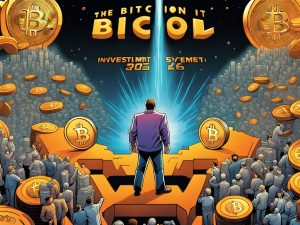The Rollup Chain from ConsenSys: Expanding Ethereum Access with Zero-Knowledge Cryptography
The rollup chain from ConsenSys, known as a zkEVM, aims to increase access to Ethereum using zero-knowledge cryptography. This rollup network, called Linea, is compatible with the Ethereum Virtual Machine (EVM), allowing existing Ethereum-based applications to be easily ported over. Linea offers cheaper and faster transactions compared to the congested parent network, making it a critical element in Ethereum’s roadmap.
Key Points:
- Linea, a zkEVM project, will be launched on the main Ethereum network this week.
- Rollups like Linea provide cheaper and faster transactions compared to the Ethereum network.
- App developers can deploy their projects to Linea’s alpha network, with public access available next week.
- ConsenSys, led by Ethereum co-founder Joe Lubin, aims to increase the number of users on the network by moving activities to layer 2.
- Linea’s bytecode compatibility with the EVM makes it easier to use with existing Ethereum developer tools.
Linea’s launch follows the release of software development kits (SDKs) by zkSync and Polygon, allowing developers to clone their code and create their own rollup networks. While Linea will have certain points of centralization during its alpha launch, ConsenSys plans to make it fully open-source in the future. As the rollup technology advances, Linea aims to achieve full decentralization.
Hot Take
Linea’s launch is a significant step towards expanding access to Ethereum and addressing the scalability issues of the parent network. By providing cheaper and faster transactions, Linea opens up new possibilities for various use cases on Ethereum. As the rollup technology improves, it is expected to become the primary method for users to access Ethereum, making it more accessible and practical for a wider audience.


 By
By
 By
By
 By
By


 By
By